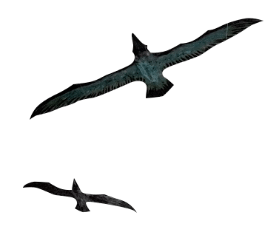At the present time of devastating climate change and political conflicts about the environment and energy consumption, this exhibition considers a historical moment when once remote wildernesses were first surveyed, developed, and photographed on both sides of the Atlantic Ocean. Drawing from the collections of Ron Perisho, the Picture Collection at the University of Bergen Library, and the Norwegian Museum of Cultural History, the exhibition investigates how two countries responded to the tourism influx, infrastructure changes, exploitation of natural resources, and the resulting effects of mapping and exploration.
The new medium of photography advanced concurrently with technological developments for transporting people and changing their views of the landscape. Presented alongside each other, works by Scandinavian photographers Marcus Selmer (1819-1900), Knud Knudsen (1832-1915), Axel Lindahl (1842-1907), and Anders Beer Wilse (1865-1949), and American photographers Carleton Watkins (1829-1916), A.J. Russell (1830-1902), Timothy O’Sullivan (1840-1882), and William Henry Jackson (1843-1942), among others, make these similarities in subject and style of Norwegian and American photographic practices apparent. Although the political and cultural differences between the cultures are significant, each nation rapidly developed roads, railroads, tunnels and bridges in almost inaccessible terrain and provided photographs of these successes in engineering. This project surveys artists’ attempts through personal initiative or as part of government surveys to photograph a national landscape in relation to diverse political, economic, and cultural interests.
In drawing correlations between the two cultures, the exhibition proposes a reconsideration of the conscious and unconscious assumptions about the meaning of national identity in the construction of a national iconography. For instance, the photographs of the American West, particularly those that emphasize new railroad routes and mining opportunities, prompt consideration of fraught notions of the “frontier.” Perhaps most significantly, several photographs engage with the “ethnographic other” in these decades of rapid industrial and political change. The exhibition addresses issues of land occupation, immigration, nation-building, and the representation of Indigenous cultures in both countries. Additionally, many of the landscapes in the exhibition engage with the aesthetic of the Romantic Sublime and depict strikingly dramatic panoramic vistas and rugged topographies.
Around and after 1814, when Norway ceded from Denmark and established an independent constitution, Norwegian art frequently reflects this assertion of a new national sentiment through Romantic landscapes and picturesque vistas. Photography in the nineteenth century frequently conforms to these compositional conventions of landscape painting, both in the United States and Norway, yet the photographers also recognize, and in some cases celebrate, major technological changes in the built environment. Particularly in the case of Norwegian photography, this question has yet to be sufficiently recognized and investigated. This exhibition acknowledges similarities in national subjects and photographic styles between the two cultures while also recognizing historical distinctions. Moreover, the project challenges the notion of American exceptionalism by providing another model for understanding the construction of national identity through photography. In seeing how photographs of these landscapes simultaneously reframed remote wildernesses and emphasized industrial developments, Norwegian and American audiences will be asked to reconsider their histories as singularly nationalistic in order to instead recognize compelling similarities.
The exhibition is co-curated by Shannon Egan and Marthe Tolnes Fjellestad, with support from GEO Focus Engineers, the American-Scandinavian Foundation, the United States Embassy in Oslo, the Wyeth Foundation of American Art, the Fritt-Ord Foundation, the Civil War Institute at Gettysburg College, and the University of Bergen Library. The exhibition draws from the collections of Ron Perisho, the Picture Collection at the University of Bergen Library, and the Norwegian Museum of Cultural History. The presentation at the National Nordic Museum—the final North American venue for the exhibition—is coordinated by Leslie Anne Anderson, Director of Collections, Exhibitions, and Programs.


